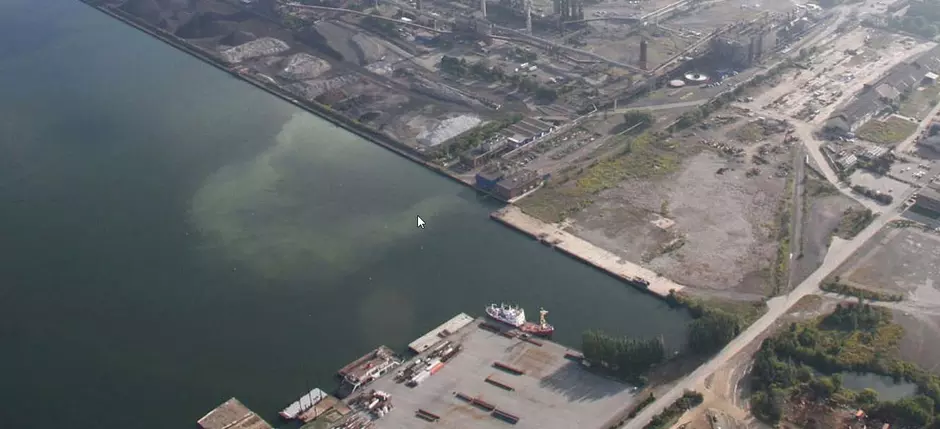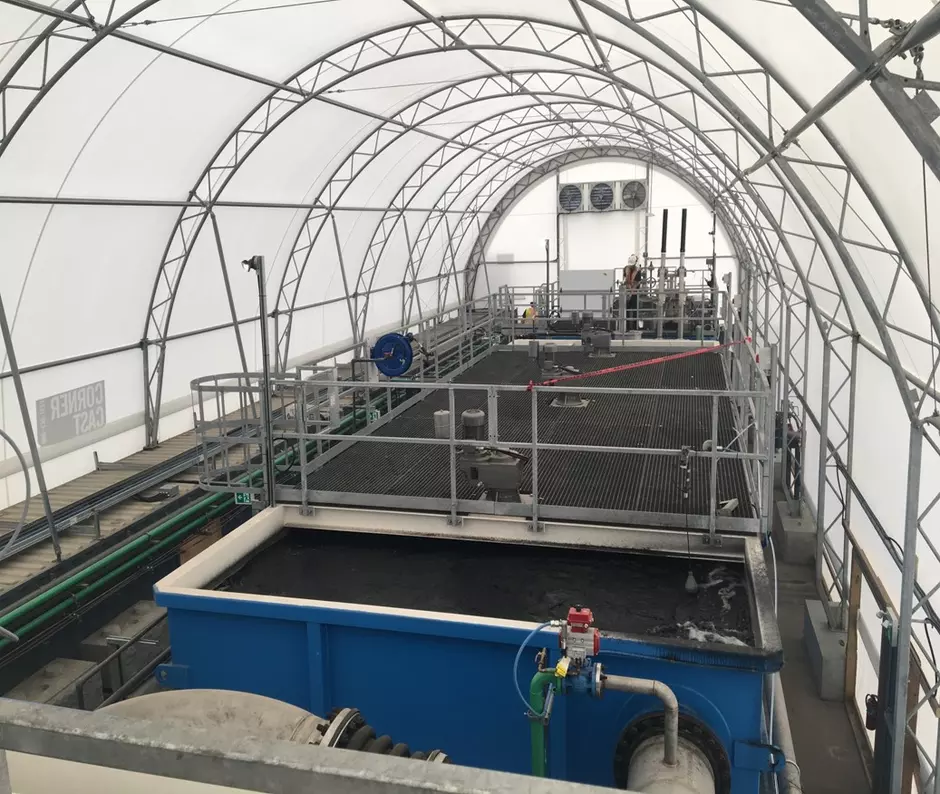The Challenge

Randle Reef Contaminated Sediment Remediation project site is approximately 60 hectares (the equivalent of 120 football fields) and involves the remediation of approximately 695,000 m3 of contaminated sediments with polycyclic aromatic hydrocarbons (PAHs) and other toxic chemicals.
It is the largest PAH-contaminated sediment site on the Canadian Great Lakes. PAH contamination at Randle Reef is a legacy of a variety of past industrial processes dating back to the 1800s. There are multiple sources of contamination including coal gasification, petroleum refining, steel making, municipal waste, sewage and overland drainage.
In 2002, a Project Advisory Group reached an agreement to explore the idea of containing and capping the sediment. An environmental assessment, project designs, and the quest to secure funding soon followed.
The Project
The construction of a 6.2 hectare engineered containment facility (ECF) on top of a portion of the most contaminated sediment. Dredging and placing the remaining contaminated sediment in the facility. The excess water will be treated before being discharged back in the harbor. The sediment will then be covered by a multi-layered environmental cap.
The Solution

For the rehabilitation of the highly contaminated Hamilton Harbor, Veolia offered a temporary installation for the following treatment:
- Removal of TSS and metals using ACTIFLO
- pH control and addition of a coagulant
- Removal of PAHs and organics using ACTICARB
- Addition of powdered activated carbon (PAC) and another coagulant
- Selection of coagulants was tricky because criteria for both aluminum and iron
- Spent PAC and TSS returned to the ECF
The Results
The treatment plant reduced the concentration of suspended solids by 88%. Removal rates for metals varied between 50% for selenium and 99% for lead, and the metals final concentration were on average 10 to 100 times lower than the criteria. Organics such as polycyclic aromatic hydrocarbons (PAH) had removal rates between over 93% for benzo (a) pyrene and over 99% for naphthalene. In general, the PAH concentration after treatment was below detection limit and at least ten times lower than the criteria. Given the detection limit issues, we suspect that the actual removal was actually significantly higher than shown above.
Following extensive analyses the plant was compliant over 99.9% of the time.
The Client
The Hamilton Harbour lies on the western tip of Lake Ontario and has been serving the communities surrounding it for centuries. With the years of pollution, the water quality has deteriorated and posed a risk for the ecosystem.
The Randle Reef site was identified as a principal target of Harbour restoration objectives in the late 1980s.
Key Driver
Over centuries of industrialization and pollution the water quality deteriorated and the ecosystem was at risk. It was urgent for the government to react.


